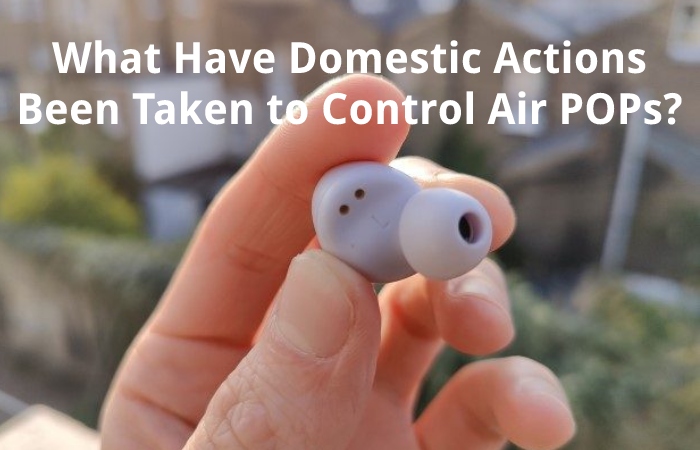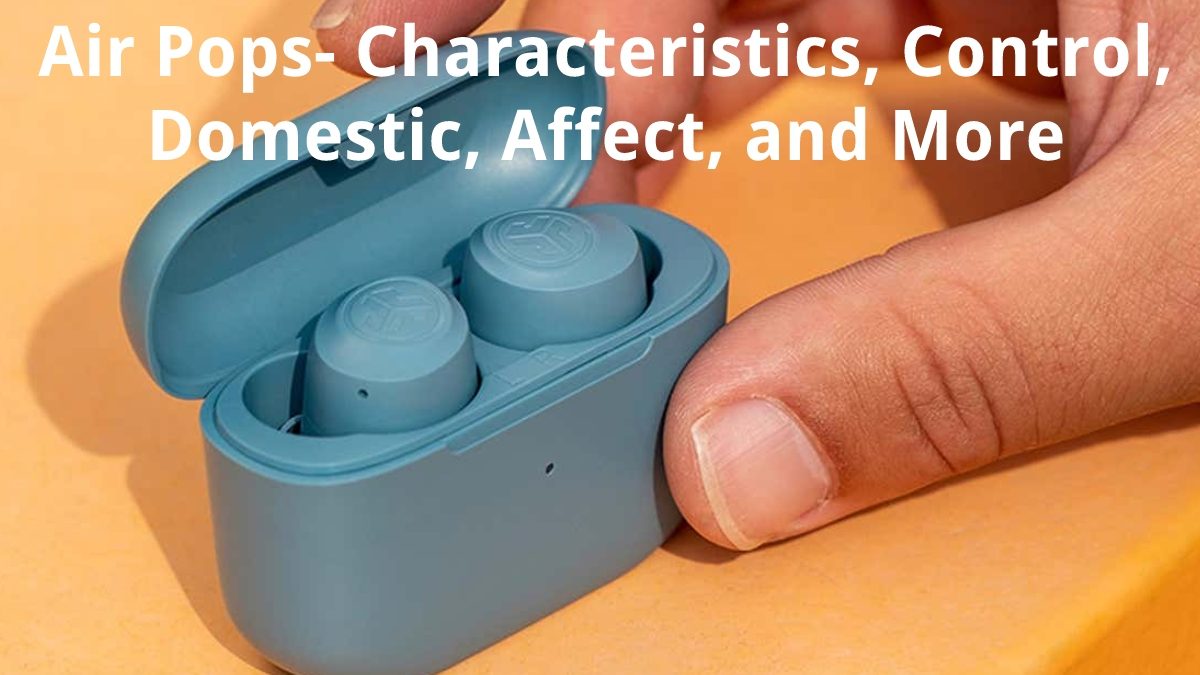Table of Contents
Air Pops
Air pops full name Persistent organic pollutants (POPs) are organic compounds of natural or anthropogenic origin that resist photolytic, chemical, and biological degradation (UNEP, 1999). They characterize by low water solubility and high lipid solubility, which gives them a high potential for bioaccumulation in fatty tissues of living organisms. POPs are semi-volatile, transporting them via the atmosphere long distances from their original source. Dads are also distributed via the aquatic environment. Due to their environmental transport, POPs have distributes throughout the planet, including regions where they have never use.
What Are POPs?
Persistent organic pollutants (POPs) are a lesson of hazardous chemical contaminants documented as a series, global threat to humanoid health and networks. POPs are substances that specifically:
- Remain intact for exceptionally extended areas (many years);
- become widely distributed throughout the location as a result of natural processes involving soil, water and, most notably, air;
- accumulate in living creatures, including persons, and found at advance concentrations at higher levels in the food chain; and
- are toxic to both humans and wildlife.
Some POPs are pesticides; some are industrial materials, and approximately unintentionally shape byproducts formed during specific combustion and chemical industrial processes. Some examples of POPs are DDT, lindane, PCBs and dioxins.
Characteristics of Air Pops
As a general rule, POPs have several common properties:
POPs are persistent in the environment. They fight degradation or breakdown through physical, chemical, or biological processes;
POPs generally are semi-volatile: They evaporate relatively gradually but travel long distances on air currents when they enter the air. They reappearance on earth in rain and snow in the colder areas of the globe, resulting in their buildup in areas such as the Arctic, thousands of kilometers away from their sources;
POPs generally have low water solubility (they do not melt readily in water) and high lipid (fat) solubility (they do dissolve easily in fats and oils). Persistent substances with these properties bioaccumulate in fatty tissues of living creatures. In the setting, concentrations of these substances can upsurge by issues of many thousands or millions as they move up the food chain; and
POPs can potentially injure humans and other organisms even at the low concentrations at which they are now found in the environment, wildlife and humans. Some POPs in tiny amounts can disrupt normal biological functions, including the activity of natural hormones and other chemical messengers, triggering a cascade of potentially harmful effects.
Emissions of Air Pops
This indicator tracks tendencies in anthropogenic emissions of POPs since 1990. PAH emissions describe at the moment, but releases of other POP mixes will add in the future. The indicator also provides info on emissions by sector: Vigor production and distribution; Energy use in industry; Industrial processes; Street transport; non-road transport; Commercial, institutional and households; Solvent and product use; Farming; Waste; and Other. Geographically, the indicator covers the EEA-33. The EEA-33 country grouping includes republics of the EU-28 (Austria, Belgium, Bulgaria, Croatia, Cyprus, the Czech State, Denmark, Estonia, Finland, France, Germany, Greece, Hungary, Ireland, Italy, Latvia, LRTAP Report.
Indicator
This indicator paths trends in anthropogenic emissions of POPs since 1990. PAH emissions are described at the moment, but emissions of other POP mixes will add in the future.
The indicator also provides info on emissions by subdivision: Energy production and distribution; Energy use in industry; Industrial processes; Road transport; non-road transport; Commercial, institutional and households; Solvent and product use; Agriculture; Waste; and Other.
What Have Domestic Actions Been Taken to Control Air POPs?

The United States has taken solid domestic action to reduce releases of POPs. For example, none of the original POPs insecticides listed in the Stockholm Agreement is registered for sale and distribution in the United States today. In 1978, Congress prohibited PCB production and severely restricted the use of residual PCB stocks. In addition, since 1987, EPA and the conditions have effectively reduced environmental releases of dioxins and furans to land, air, and water from U.S. sources.
These regulatory movements, along with voluntary efforts by U.S. industry, resulted in a greater than 85 per cent decline in total dioxin and furan releases after 1987 from known industrial sources. To better understand the risks related to dioxin releases, EPA has been conducting a comprehensive reassessment of dioxin science and will evaluate additional actions that might further protect human health and the environment.
How Do POPs Affect People and Wildlife?
White Seal
Studies have linked POPs contacts to declines, diseases, or abnormalities in several wildlife species, including certain kinds of fish, birds, and creatures. Wildlife also can act as sentries for human health: abnormalities or declines detected in wildlife populations can sound an early warning bell for people. For example, behavioral abnormalities and congenital disabilities in fish, birds, and mammals in and around the Great Lakes led scientists to investigate POPs exposures in human populations.
POPS and the Food Chain
POPs work their way finished the food chain by accruing in the body fat of living organisms and becoming concentrates as they move from one creature to another. This process is known as “biomagnification.” When pollutants found in small amounts at the lowest of the food chain bio magnify, they can pose a significant danger to predators that feed at the top of the food chain. This means that even minor releases of POPs can have substantial impacts.
Components
Context Description
Targeted European Commission lawmaking (directives and regulations), coupled improve control and abatement techniques. I have led to decent made by the EEA-33 countries towards reducing air emissions of POPs, including the PAH group of chemicals. Such legislation describe below.
The ultimate impartial of the 1998 UNECE Aarhus Procedure on POPs (to the 1979. A Convention on Long-range Transboundary Air Contamination (LRTAP)) is to eliminate any discharges, emissions, and losses of POPs. The original protocol bans the manufacture and use of some products outright (aldrin, chlordane, chlordecone, dieldrin, endrin, hexabromobiphenyl, mire, and toxaphene). In contrast, others schedule for elimination later (DDT, heptachlor, hexachlorobenzene, and PCBs). Twelve POPs cover below the original possibility of the Stockholm Agreement:
insecticides: aldrin, chlordane, DDT, dieldrin, endrin, heptachlor, hexachlorobenzene, murex and toxaphene;
industrial chemicals: HCB and PCBs;
by-products: HCB; polychlorinated dibenzo-p-dioxins polychlorinated dibenzofurans (PCDD/PCDF); then PCBs.
In May 2009, additional substances add to the Stockholm Convention:
Pesticides: chlordecone, alpha hexachlorocyclohexane, beta hexachlorocyclohexane, lindane, and Penta chlorobenzene;
industrial chemicals: hexabromobiphenyl, hexabromobiphenyl ether, and heptagram Modi. A phenyl ether, Penta chlorobenzene, perfluoro octane sulfonic acid. Its salts and perfluoro octane sulfonyl fluoride. At tetraboron Modi phenyl ether and pentagram Modi phenyl ether;
by-products: alpha-HCH, beta-HCH and Penta chlorobenzene.
Targets
As noted above, the Aarhus Procedure on POPs to the UNECE LRTAP Agreement obliges parties to reduce. In their emissions of dioxins, furans, PAHs and HCB to below. In their 1990 levels (or an alternative year between 1985 and 1995 inclusive).
Related Policy Documents
The Clean Air for Europe (CAFE) Programmer: To a Thematic Strategy for Air Quality COM(2001) 245 final
Directive 2001/80/EC, large combustion plants.
It Directive 2001/80/EC of the European Meeting and of the Council of 23 October 2001. In the limitation of emissions of certain pollutants into the air from large combustion plants.
Directive 2008/1/EC of the European Parliament and of the Council. In 15 January 2008 concerning integrated pollution prevention and control.
IPPC (newly recoded) Directive 2008/1/EC of the European Assembly and the Council of 15 January 2008 concerning. Integrated pollution prevention and control. (See earlier code 96/61/EC).
Conclusion
Many POPs extensively use during the boom in industrial production after World War II. If when thousands of synthetic chemicals introduced into commercial use. These chemicals proved beneficial in pest and disease control, crop manufacture, and industry. These same chemicals, however, have had unforeseen belongings on human health and the environment.

